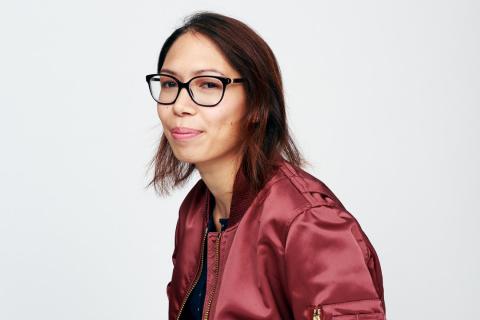 BAFTA/Charlie Clift
BAFTA/Charlie Clift Meet Jodie Azhar, BAFTA Breakthrough Brit and Lead Technical Artist on the Total War series at Creative Assembly.
What is your job role and what does it entail?
I’m Lead Technical Artist on the award-winning Total War series at Creative Assembly. I work with the art and the programming teams to get the art in the game looking the way our artists want it to, whilst also making sure the game performs well. To help the artists do this I build tools with the programmers to make them faster, removing any boring or repetitive tasks and generally streamlining the process.
How did you start working in the game industry?
When I was looking for my first job in games I took my CV and show reel to the EGX Careers Fair. I got chatting to games companies there, one of which took a copy of my CV and show reel and got in contact a few weeks later with my first job as a Junior Animator. Meeting people face to face and talking through my show reel was really beneficial.
What/who was your inspiration at school?
I liked science and maths but also enjoyed drawing and had an artistic side. When it came to my A-Levels I was making my options with a view to what jobs I could get later as an artist. Game development is a sustainable industry with a lot of growth so now I can be an artist and have a really fun job!
Did you have a mentor? Do you have a mentor now?
For most of my career I haven’t really had a mentor and it’s been something that I feel as though I missed out on. It is fantastic that there are now more ways for people to get this support, and as I am a BAFTA Breakthrough Brit, through BAFTA I have been paired with mentors. I find it’s useful to have the opinions of different people as game development is a broad area and there are many different experiences to learn from.
Did you study anything at school/college that you think helps you in your job now?
Studying art has really helped, having a strong background in the fundamentals of art is important.
At University I studied Computer Visualisation and Animation, which taught 3D art and animation but also maths and programming. As an artist if you understand how computers and computer games work then you can be mindful when creating your art, so you can make something that looks good within the context of a game.
What’s your favourite part of your job?
Helping artists make awesome art! If I can create a tool that turns ten repetitive tasks into a tool that does them all at once they’ll have more time to focus on the creative side of their role. Helping them achieve their vision within the game, and seeing it translated is really satisfying.
What is the hardest thing about your job?
Specifically to my job, whereas a lot of people will be working on one project at a time, our team will cover all of them, as we help all of the artists. Juggling the priorities is tricky; we obviously want to make sure everyone gets the same amount of focus so every project looks awesome.
Can you describe what your average working day is like?
The day starts with a meeting with my team, I see what they’re all working on and we’ll chat about any problems from the previous day.
The rest of my day is working on tasks for projects, if an artist needs a new tool, wants me to check something in a game or has any problems then I’ll investigate and together we’ll try to come up with solutions.
To date what piece of game design work are you most proud of and why?
The amount of content and detail we got into Total War: WARHAMMER. It was a collaboration across the whole project; we had lots of artists, programmers and designers all working on one big game. The exciting thing about working in a big studio like Creative Assembly is that you can have big ambitions and try new things.
What three tips would you give to Young Game Designers thinking about their game systems for their application?
Think about why the things in your game look the way they do. For example, why is a character wearing these clothes? Is it enough that they just look cool? Think about the reasons behind it.
Be imaginative and push yourself, things don’t have to look as realistic as they would be in our world. You can create your own reality. That’s the exciting thing about video games; you can make your imagination your game’s world.
Don’t be afraid to not use everything you design. Experiment in the concept design stage before you go forward with your best ideas.

